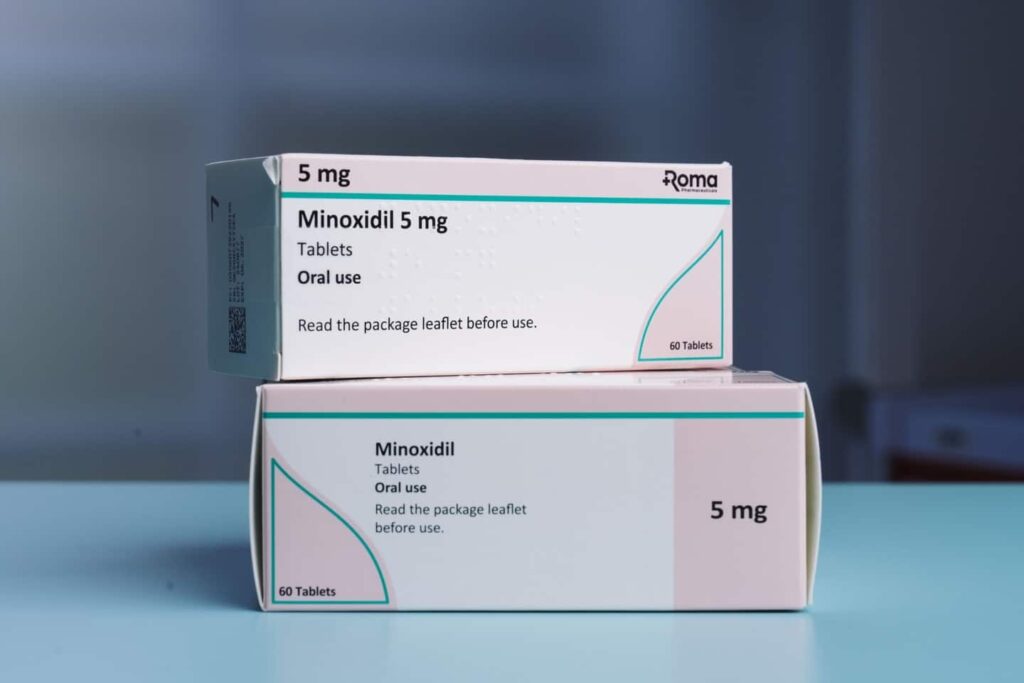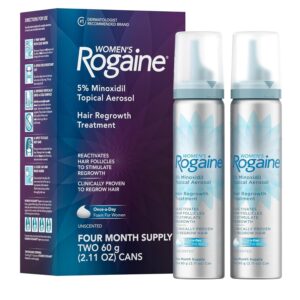How Minoxidil Works and Approval Status
Minoxidil promotes hair growth by shortening the resting phase of the follicle and extending the growth phase, allowing thinner, miniaturized hairs to grow longer and thicker over time.
Topical minoxidil is FDA-approved for hair regrowth and is sold in strengths such as 5% foam or solution. Men’s labeling focuses on the vertex (top) of the scalp, while women’s 5% foam is applied once daily. Oral minoxidil, marketed for hypertension under the brand Loniten, is not FDA-approved for hair loss and is used off-label, which means it should only be prescribed and monitored by a qualified clinician familiar with its potential cardiovascular effects.
Efficacy, Dosage, and Side Effects

In a 2024 randomized trial published in JAMA Dermatology, 5 mg of oral minoxidil taken once daily for 24 weeks produced results similar to those achieved with 5% topical minoxidil applied twice daily in men with androgenetic alopecia. Both methods can produce visible improvements in as little as two to four months, but most people require three to six months for noticeable regrowth, and any gains typically regress within months of stopping treatment.
According to the American Academy of Dermatology, topical minoxidil’s side effects are usually limited to mild scalp irritation, redness, or itching, which can sometimes be reduced by switching from solution to foam. Low-dose oral minoxidil, typically prescribed in the range of 0.25 to 5 mg daily, can cause hypertrichosis (unwanted hair growth on the face or body), ankle swelling, lightheadedness, or a faster heart rate. Rare but serious cases of pericardial effusion have been documented, underscoring the importance of medical supervision.
Practical Use and Key Considerations

Before starting minoxidil, confirm the diagnosis of pattern hair loss to rule out other causes such as alopecia areata or scarring alopecia. Choose the form you are most likely to use consistently: topical is ideal for those wanting an FDA-approved treatment with minimal systemic exposure, while oral may be an option for those who cannot tolerate topical application and are willing to be closely monitored.
Topical minoxidil should be applied to a dry scalp and allowed to dry completely before covering the head or sleeping. Users should expect a temporary increase in shedding during the first few weeks as hair follicles cycle, which can be a normal part of the process.
Minoxidil often works best when combined with other evidence-based treatments such as finasteride for men or clinician-guided hormonal therapy for women. For oral minoxidil users, warning signs like chest pain, shortness of breath, swelling in the legs, or a rapid heartbeat require immediate medical attention.
Medical note: This information is for educational purposes only and should not replace medical advice. Always consult a qualified healthcare provider before starting or changing treatment.







